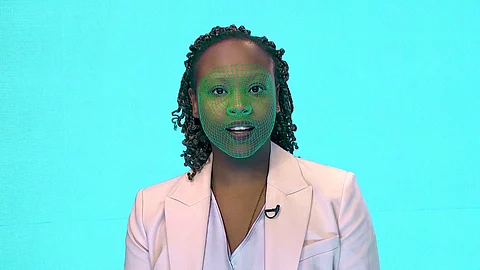

Hyderabad: Technology can be a great democratiser. Over the past decade, the costs and resources involved in creating deepfakes have reduced significantly.
There are several reasons for this. Technology has played a key role in enabling easy access to deepfake tools nowadays. However, easy availability also has repercussions for user rights and experience. It increases the propensity of synthetic content to go viral.
Costs behind creating deepfakes
Technological advancements and accessibility have increased manifold since the 2000s.
Today, the ease of accessing AI (Artificial Intelligence) and ML (Machine Learning) tools to create life-like synthetic media is mind-boggling. Till five years ago, the cost to create realistic deepfake content, such as videos or audio, required immense computing power, extremely large datasets, top-quality infrastructure and expertise in complex software to produce an extremely small output based on ML.
Costs could range anywhere in the thousands to millions of dollars.
Today, free-to-use apps and websites have made it much easier for users to create realistic audio, visual or audio-visual content. At virtually zero cost, a user can make ‘realistically plausible’ content. These websites use pre-trained datasets for their models. As a result, users can engage in services such as AI face swaps, AI voice modulation and multi-lingual functionality without learning the intricacies of software and technology.
A caveat comes with such applications: limits placed on the ability to customise or curate the content. Despite such limitations, they provide great convenience for end users to generate deepfake content.
Generating deepfake content can be time-consuming. Depending upon the complexity sought, deepfakes can take anywhere from five minutes to months to create. Again, factors to consider here would be the sophistication, software expertise and intent behind creating the deepfake.
Deepfakes for 10 rupees
The answer is simple; there is a huge demand for deepfake content today and the supply is slowly catching up. Demand for high-quality deepfake videos with minimum lag or disruption is high in the market.
In India, several political parties are increasingly utilising deepfake content for messaging and communications outreach. Companies and educational organisations are using AI-based video content to enrich learning.
Understanding its transformative capabilities, the market is ripe for AI-based deepfake content.
Divyendra Singh Jadoun, founder of The Indian Deepfaker – a company providing deepfake services – has previously claimed that deepfake videos can be created for less than Rs 10!
Many applications and websites have spouted to satiate the growing market for manipulated images and videos. Apps such as Face Swap Live, DeepFaceLab, FaceApp, Reface, MyHeritage, and Lensa AI are some of the many free services providing avenues to generate, modify and transform images and audio to appear hyper-realistic. They have add-ons and premium features which can be purchased at affordable prices.
Is there a good side to deepfakes?
There is a high propensity for deepfake content to be used for illicit and discriminatory purposes.
Fraudsters have already started using deepfakes to trick people into providing their sensitive information such as their financial details, identity cards, and biometrics. Deepfake videos are being used for various purposes by people and companies, especially those involved in nefarious activities.
As pointed out, this demand can be attributed in part to the cheap costs of internet data, cellular devices and apps for producing such deepfake content.
However, can deepfakes be used only to do something bad? It would certainly depend on the intent of the person generating the deepfakes. As some experts opine, ‘technology is neutral’ and it is humans who decide how it has to be deployed.
Deepfakes have shown huge potential to be used in real-time multilingual content creation. Several free-to-use AI software can facilitate real-time translation of speech into more than 10 languages seamlessly. The result is an entirely convincing replica of a speech being given by a popular public personality.
For example, an English speech can be simultaneously translated and voiced by the same speaker in Hindi, Gujarati, Kannada, Malayalam, etc. Deepfake language-translation services allow savings on costs, resources and time used for ensuring connectivity and delivery of messages across a broad spectrum of languages and dialects.
Football star David Beckham’s video advocating for prevention of Malaria in 2020 is a good example. In the video, Beckham can be seen speaking in English, and shortly after, in Spanish, Arabic, Hindi and French among others.
Need for guardrails
Attempting to predict the scale that a new technology will reach is always difficult. With AI, the variables for both success and failure increase. However, the easy access to tools and affordability of services will certainly expand deepfake use.
It will be used by a growing number of clientele and across various sectors. Establishing guardrails for transparency and non-biasedness will enable safer AI systems. Regulation will be important.
The Ministry of Electronics and Information Technology (MeitY) recently published an advisory requesting intermediaries to ‘label’ all synthetically created media. Deepfakes will become increasingly accessible in the coming time; establishing guardrails for users becomes equally important.